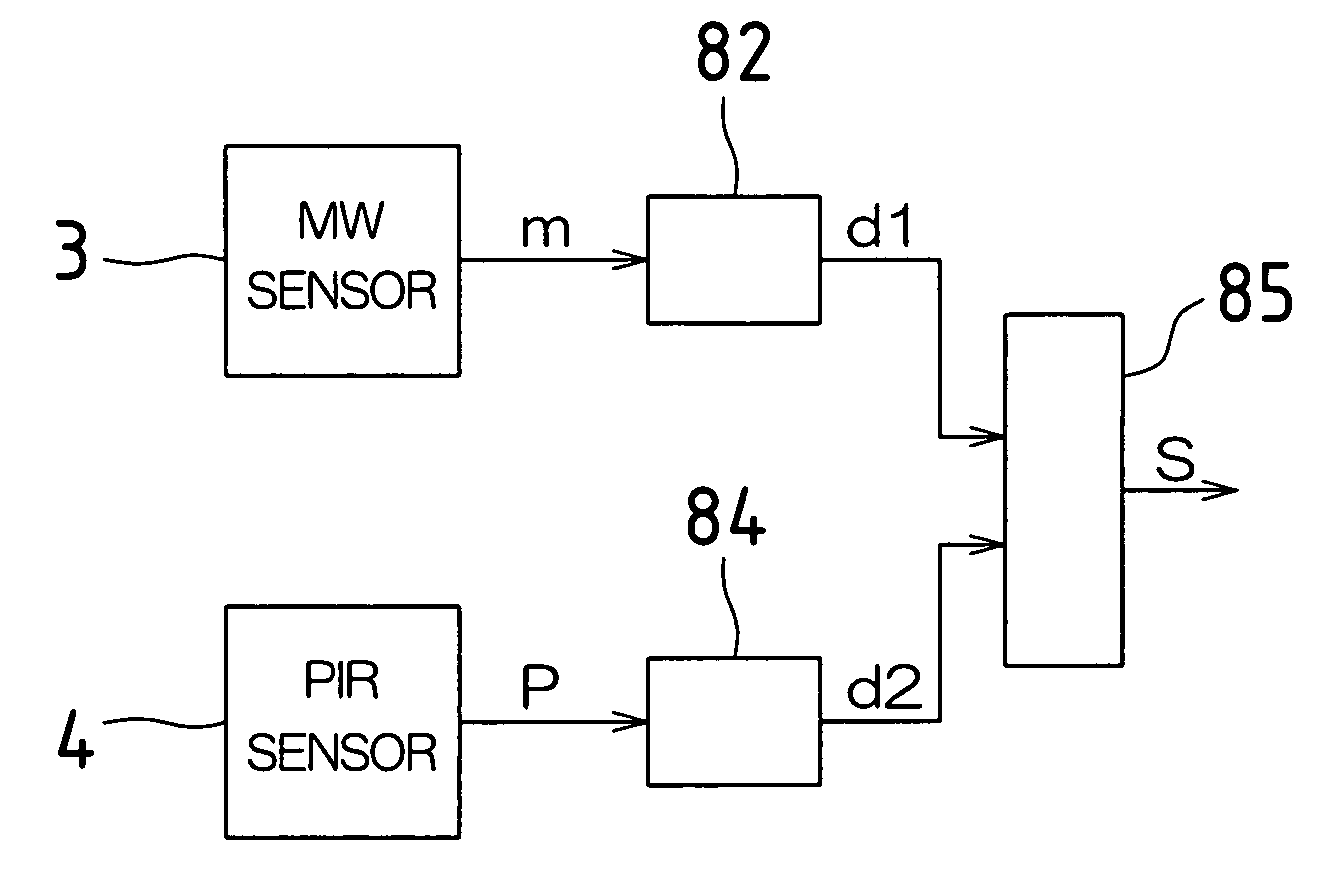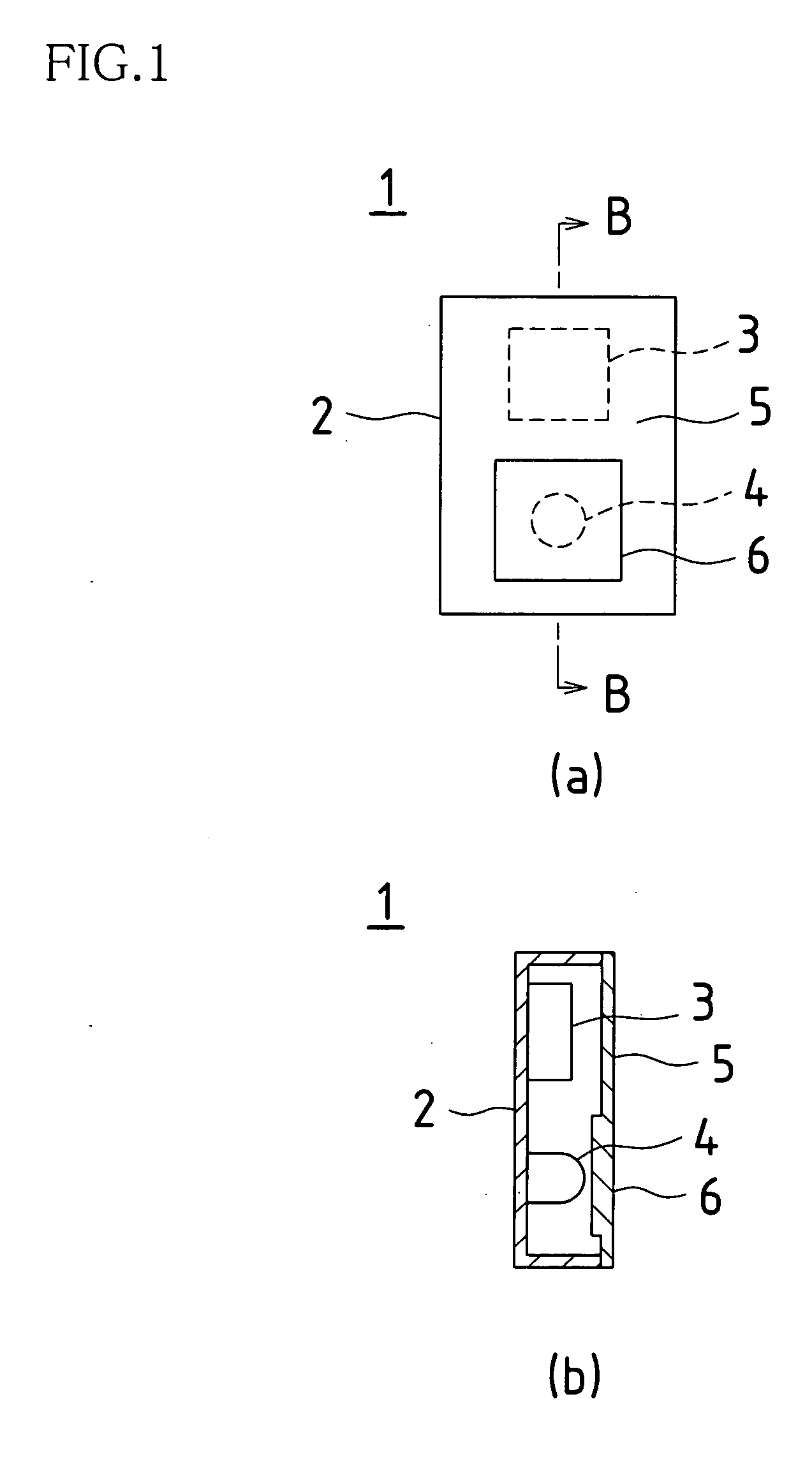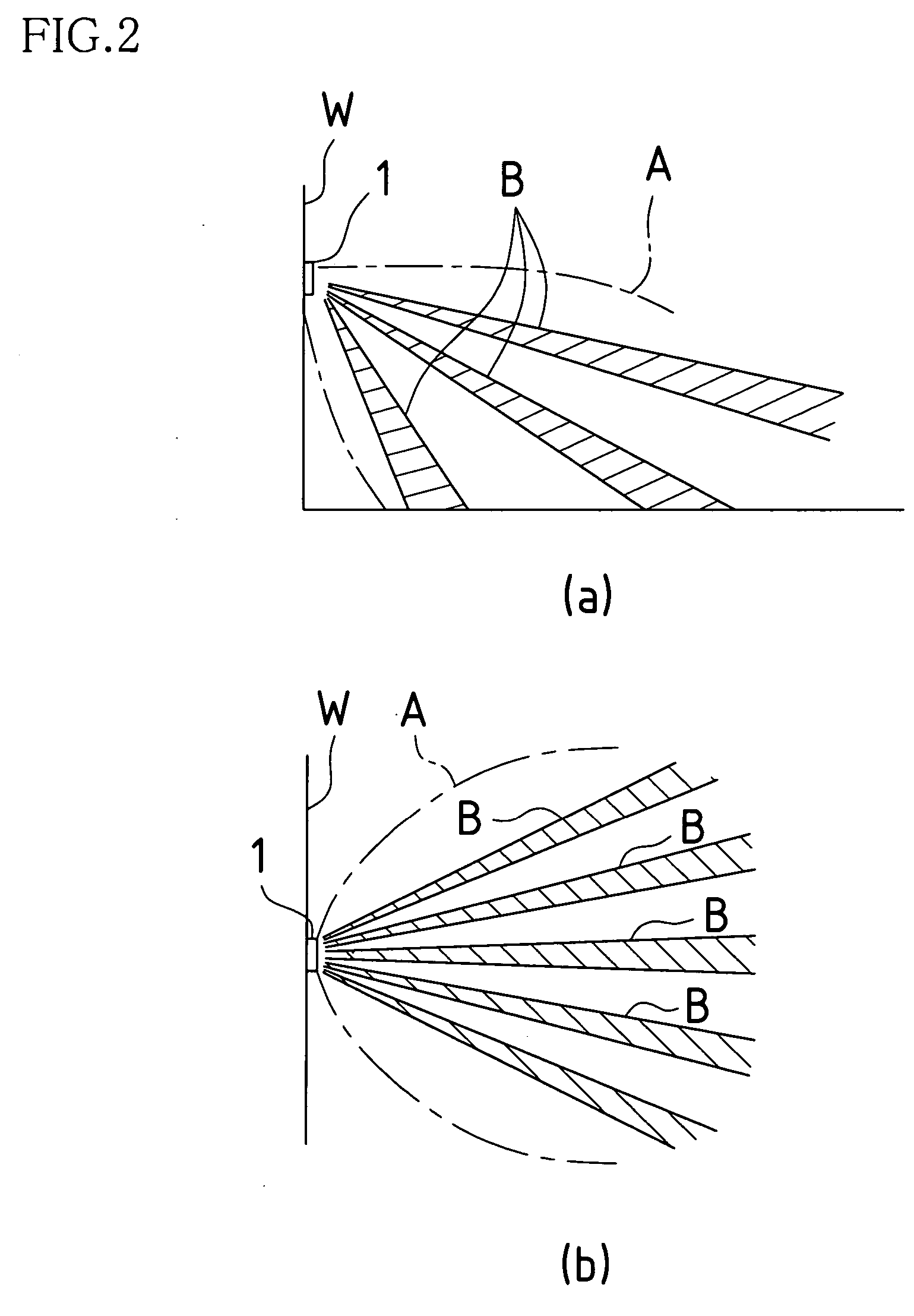Combined sensor
- Summary
- Abstract
- Description
- Claims
- Application Information
AI Technical Summary
Benefits of technology
Problems solved by technology
Method used
Image
Examples
Embodiment Construction
[0028] Embodiments of the present invention will be described below with reference to the accompanying drawings. In the present embodiment, a description will be given of the case in which a combined sensor is used for a burglar system.
[0029] Description of the Overall Configuration of the Burglar System
[0030]FIG. 1 show a burglar sensor unit 1 used as a combined sensor in a burglar system according to the present embodiment. FIG. 1(a) illustrates a front view of the burglar sensor unit 1 while FIG. 1(b) a sectional view taken along line B-B of FIG. 1(a). The burglar sensor unit 1 accommodates an MW sensor 3 and a PIR sensor 4 in a case 2, with the front of the case 2 covered with a cover 5 that allows passage of microwaves and a Fresnel lens 6 formed on the front of the IR sensor 4.
[0031]FIG. 2 show the relationship between unit installation position and detection areas of the MR sensor 3 and the PIR sensor 4 when the burglar sensor unit 1 is installed (installed, for example, o...
PUM
 Login to View More
Login to View More Abstract
Description
Claims
Application Information
 Login to View More
Login to View More - R&D
- Intellectual Property
- Life Sciences
- Materials
- Tech Scout
- Unparalleled Data Quality
- Higher Quality Content
- 60% Fewer Hallucinations
Browse by: Latest US Patents, China's latest patents, Technical Efficacy Thesaurus, Application Domain, Technology Topic, Popular Technical Reports.
© 2025 PatSnap. All rights reserved.Legal|Privacy policy|Modern Slavery Act Transparency Statement|Sitemap|About US| Contact US: help@patsnap.com



